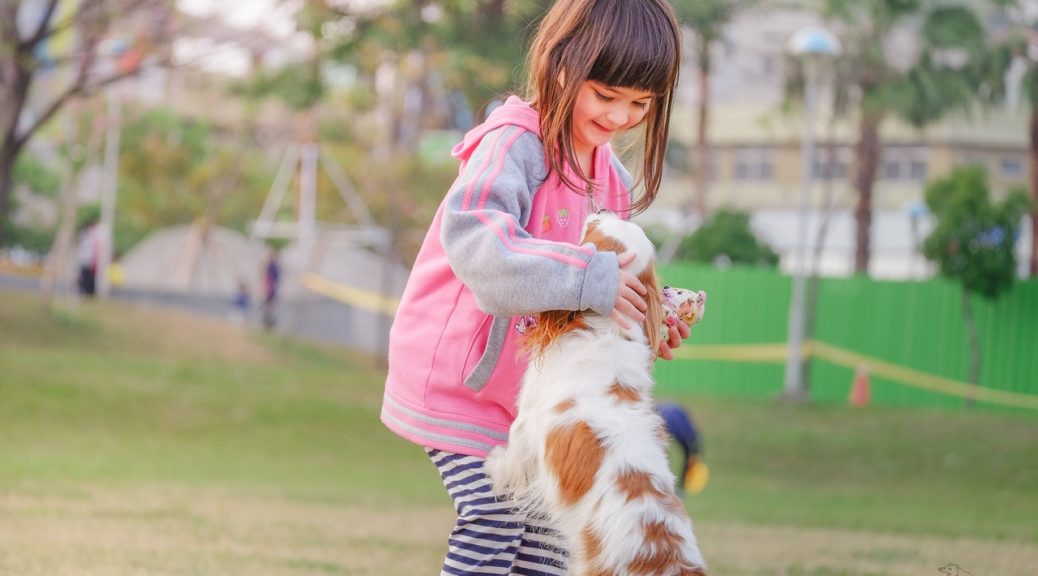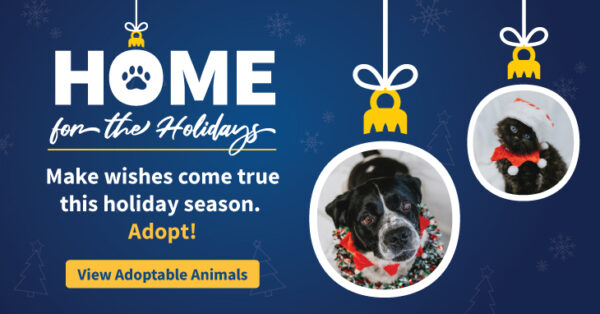How to handle jumping
by Ontario SPCA and Humane Society | Dog Care | April 19, 2024

Jumping is a common training challenge and is usually attention-seeking behaviour. We inadvertently “teach” our dogs to jump up on us by rewarding them each time they do so. Whether it’s by touching them (even if it is handling them to keep them from jumping up), playing with them, or by simply speaking to them; all of these actions can still be rewarding to the dog.
The trick to handling jumping is to carefully manage your dog’s behaviour so that they have few opportunities to jump on people, and when they do, ensuring they are not rewarded. At the same time, you need to teach your pup what to do instead of jumping to get attention. Below are some helpful tips!
Teach your pup an alternative to jumping
If your dog approaches you and attempts to jump up, immediately turn your back on them; no touching, pushing or scolding. When they have four paws on the floor again, you may turn back to them and quietly praise. If they approach you and choose to sit, give them a treat.
When you or a guest enter the house, you can encourage them to “Find your toy!” When they find the toy and bring it over, reward them with play and attention. This helps channel your dog’s energy and gives them an alternative way to greet people!
When your dog approaches you, ask for a “sit,” or “down,” before they have a chance to jump. Then reward them with a treat or play. If you have to ask more than once, turn away and ignore your dog or walk out of the room and close the door for a couple minutes.
Teach the concept of “Off.” When your dog jumps on you, say “Off” and back up two steps until your dog’s paws touch the ground. If your dog’s paws remain on the floor, praise them. Then redirect them by saying “Find your toy.” If the dog jumps again, repeat the above or do a time-out.
On your walks, ask your dog to sit whenever anyone approaches. Have your pup sit in front of at least 10 new people this week. When your dog sits, reward them with a treat or toy. They are learning that the way to greet humans is by sitting in front of them. The exercises below are also excellent at teaching this!
Management techniques
“Ignore” your dog, meaning to make no eye contact, say nothing, and stand still. Turning your back to them can also be effective. This helps to take away the attention they are trying to receive when they are jumping up.
“Get them moving” If your dog is on a leash, try to walk forward with them, then turn 180 degrees away to get them moving instead of staying stationary and jumping up.
“Redirect their focus” with a toy, treat or verbal cue. If your dog is familiar with verbal cues, try using “down,” “sit,” or “watch me,” immediately followed with a treat and attention.
“Ground” the leash by gently stepping on it until your dog settles, then release it immediately and reward right away. This will give your dog a little “time-out” indicating that when they are calm, they are rewarded. The release part is important! If you don’t release them once they settle, they won’t get the chance to learn that calm behaviour wins freedom. You can also do time–outs in a crate if your dog is crate-trained, or in a safe dog-proofed room (free from “chewables” if your dog is in a chewing phase).
Check out our blog for more training and enrichment tips!
If this information was helpful, please help us continue to educate about pet health and well-being by making a donation.
Categories
Testimonial
We have supported the OSPCA since 1951
We have supported OSPCA since our arrival in Canada in 1951. Keep up the greatest T.L.C. for animals.
